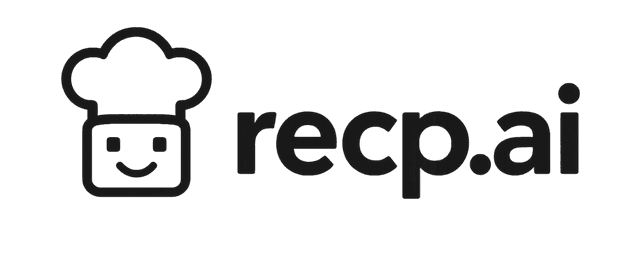From Kitchen to Label: How to Understand the True Nutritional Value of Your Homemade Food

One of the best steps toward a healthier lifestyle is cooking at home. You control the ingredients, the portion sizes, and the cooking methods. But there’s a catch: unlike store-bought products, your homemade meals don’t come with a nutrition label.
How many calories are really in your "healthy" salad after adding dressing, nuts, and avocado? How much sodium is in your favorite soup? This is where a powerful healthy eating tool can change the game. Recp.ai empowers you to calculate the nutritional value of homemade food, giving you clarity and control.
The Problem: The Homemade "Health Halo"
We often assume our home-cooked meals are perfectly healthy, but hidden calories, sugars, and fats can easily add up. Without a clear ingredient nutrition breakdown, it's impossible to know for sure. This is why being able to find the nutritional value of a recipe is so important.
Create Your Own Nutrition Facts Label
With Recp.ai, you can essentially generate an FDA-style nutrition label for any dish you create. It’s a simple way to check recipe healthiness and see beyond just the ingredients list.
How to Analyze Your Go-To Recipe:
- Gather Your Recipe: Find the recipe you want to analyze, whether it's from a website, a cookbook (use the "Text" or "Image" option), or a YouTube video.
- Let Recp.ai Do the Work: Submit your recipe to our nutritional value calculator for recipes. Our AI will read the ingredients and quantities.
- Get Your Breakdown: After the initial analysis, click the "Estimate Full Recipe Nutrition" button. You’ll receive a detailed report that shows you exactly what’s in your meal.

What to Look For in Your Results
Once you have your label, you can finally understand the food labels for your own cooking. Pay attention to:
- Serving Size: The label is based on a serving size, which you can adjust. Make sure it reflects how much you actually eat.
- Calories: This gives you a baseline for energy intake.
- Sodium: Homemade soups and sauces can be surprisingly high in sodium.
- Total Sugars vs. Added Sugars: See how much sugar comes from natural sources (like fruit) versus what's been added.
- Saturated Fat: Identify hidden sources of unhealthy fats from oils, butter, or meats.
By taking a moment to analyze your favorite homemade meals, you move from hoping your food is healthy to knowing it is. Take control of your health journey and start turning your kitchen creations into clear, understandable nutrition facts today.
Create Your First Nutrition Label
Curiosity is the first step to healthier eating. Turn your favorite homemade dish into a clear nutrition label with the Recp.ai calculator.
If you're confused by some of the terms on the label, start with the basics by learning the difference between Calories and Kilojoules.
